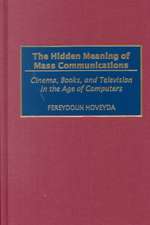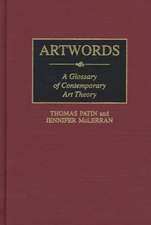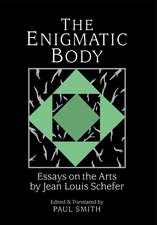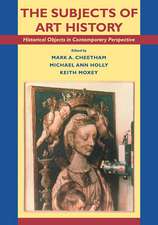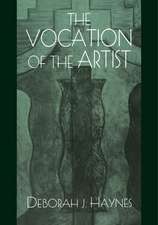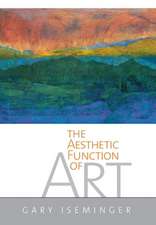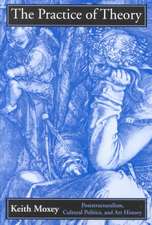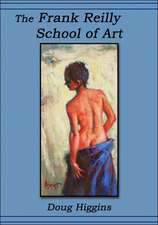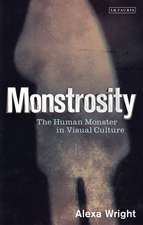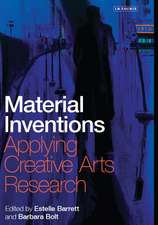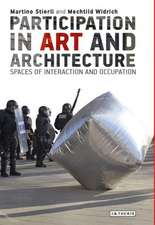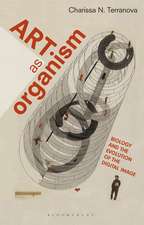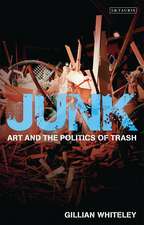Ashcan Art, Whiteness, and the Unspectacular Man
Autor Dr. Alexis L. Boylanen Limba Engleză Paperback – 30 sep 2020
| Toate formatele și edițiile | Preț | Express |
|---|---|---|
| Paperback (1) | 191.33 lei 3-5 săpt. | |
| Bloomsbury Publishing – 30 sep 2020 | 191.33 lei 3-5 săpt. | |
| Hardback (1) | 833.06 lei 6-8 săpt. | |
| Bloomsbury Publishing – 19 apr 2017 | 833.06 lei 6-8 săpt. |
Preț: 191.33 lei
Preț vechi: 244.30 lei
-22% Nou
Puncte Express: 287
Preț estimativ în valută:
36.62€ • 38.09$ • 30.23£
36.62€ • 38.09$ • 30.23£
Carte disponibilă
Livrare economică 25 martie-08 aprilie
Preluare comenzi: 021 569.72.76
Specificații
ISBN-13: 9781501371813
ISBN-10: 1501371819
Pagini: 280
Ilustrații: 32 color and 29 bw illus
Dimensiuni: 152 x 229 mm
Greutate: 0.66 kg
Editura: Bloomsbury Publishing
Colecția Bloomsbury Visual Arts
Locul publicării:New York, United States
ISBN-10: 1501371819
Pagini: 280
Ilustrații: 32 color and 29 bw illus
Dimensiuni: 152 x 229 mm
Greutate: 0.66 kg
Editura: Bloomsbury Publishing
Colecția Bloomsbury Visual Arts
Locul publicării:New York, United States
Caracteristici
Offers new take on the Ashcan Circle, a group of artists that are very well-known and represented in most museums in the United States
Notă biografică
Alexis L. Boylan is Associate Professor of Art History at the University of Connecticut, USA, with a joint appointment in the Women's, Gender, and Sexuality Studies Program and Associate Director of Humanities Institute. She is the editor of Thomas Kinkade: The Artist in the Mall (Duke, 2011) and Ellen Emmet Rand: Gender, Art, and Business (Bloomsbury, 2020). She has published in American Art, Journal of Curatorial Studies, Rethinking Marxism, MELUS, and Woman's Art Journal.
Cuprins
List of IllustrationsAcknowledgementsIntroductionChapter 1: What Are You Looking At? Bodies, Desire, and PortraitsChapter 2: Working Hard or Hardly Working: Labor, Race, and ManhoodChapter 3: Sex Sells: Desire, Money, and Male BodiesChapter 4: Men Seeking MenEpilogueSelected BibliographyIndex
Recenzii
Ashcan Art, Whiteness, and the Unspectacular Man is an insightful and beautifully written book that offers altogether new ways of understanding the links between gender, race, and art. It is both great art history and a great read.
Ashcan Art, Whiteness, and the Unspectacular Man is compellingly written and grounded in impressively extensive interdisciplinary research. Alexis Boylan has performed a stunning feat of highly original scholarship and analysis that resets the compass of how we understand a group of American artists who have long been central to the history of American art. Her prose is limber, her ideas fresh and original, and she knits together a remarkable array of diverse sources to create a convincing narrative that is simultaneously densely complex and highly readable. The rich texture of her chronicle is a breathtaking high wire act in which through close reading and thick description she confidently lays out her analysis and its conclusions. This will be a volume of great importance to the field of American art history, as well as to the related disciplines of visual culture studies, American studies, literature, history, and film, to name just a few. Boylan's chronicle about cultural anxieties, ambiguity, and unremarkable men is, well, remarkable, clearly stated, and convincingly argued.
In recent decades, groundbreaking work in American studies and art history has tackled a vital question: How has white manhood been constructed as a universal norm? Alexis Boylan joins Gail Bederman, Martin Berger, and Richard Dyer in positing an answer. Hers focuses on the paintings of the Ashcan School and relies on sharp visual analyses and innovative readings of the historical record. Boylan's book presents new ways of approaching this important artistic movement, and with it the popular fantasies of race, gender, and class that Ashcan artists experienced at the turn of the twentieth century. It also equips readers with tools to critique American discourses on immigration, then and now. It's hard to think of a more timely art-historical project.
Alexis Boylan's book is a revelation that reconceives the importance of Ashcan artists as keen observers of, and commentators on, the cultural changes of their time. These painters are justly celebrated for capturing the spectacular city, showing how modern work, consumption, entertainment and transportation transformed human interactions linking seeing and being seen to modern notions of self and social position. Boylan's careful analysis of pictures demonstrates that beyond mere documentation, Ashcan works present carefully-edited visions of New York from the perspective of a white male subject that delimit the power, or even the presence, of women, immigrants and racial others. In so doing, Ashcan painters presented a unique investigation of the meanings of modernity, whiteness and masculinity that reveal both the advantages and the anxieties that came with race, gender and class privilege. Deftly weaving together insights from cultural critics and historians as well as scholars of visual culture, Boylan argues that Ashcan school painting works against both conservative and radical concepts of masculine authority at the time, exposing the frustrations and failures they felt operating outside the controlling gaze of commercial capitalism even as they experienced the power such a position offered. The value of Boylan's investigation of the white male desire to be truly seen while avoiding objectification goes beyond enriching our understanding of history, it offers much food for thought in understanding how whiteness can continue to produce feelings of fragility that impede movement toward equity and inclusion.
Ashcan Art, Whiteness, and the Unspectacular Man is compellingly written and grounded in impressively extensive interdisciplinary research. Alexis Boylan has performed a stunning feat of highly original scholarship and analysis that resets the compass of how we understand a group of American artists who have long been central to the history of American art. Her prose is limber, her ideas fresh and original, and she knits together a remarkable array of diverse sources to create a convincing narrative that is simultaneously densely complex and highly readable. The rich texture of her chronicle is a breathtaking high wire act in which through close reading and thick description she confidently lays out her analysis and its conclusions. This will be a volume of great importance to the field of American art history, as well as to the related disciplines of visual culture studies, American studies, literature, history, and film, to name just a few. Boylan's chronicle about cultural anxieties, ambiguity, and unremarkable men is, well, remarkable, clearly stated, and convincingly argued.
In recent decades, groundbreaking work in American studies and art history has tackled a vital question: How has white manhood been constructed as a universal norm? Alexis Boylan joins Gail Bederman, Martin Berger, and Richard Dyer in positing an answer. Hers focuses on the paintings of the Ashcan School and relies on sharp visual analyses and innovative readings of the historical record. Boylan's book presents new ways of approaching this important artistic movement, and with it the popular fantasies of race, gender, and class that Ashcan artists experienced at the turn of the twentieth century. It also equips readers with tools to critique American discourses on immigration, then and now. It's hard to think of a more timely art-historical project.
Alexis Boylan's book is a revelation that reconceives the importance of Ashcan artists as keen observers of, and commentators on, the cultural changes of their time. These painters are justly celebrated for capturing the spectacular city, showing how modern work, consumption, entertainment and transportation transformed human interactions linking seeing and being seen to modern notions of self and social position. Boylan's careful analysis of pictures demonstrates that beyond mere documentation, Ashcan works present carefully-edited visions of New York from the perspective of a white male subject that delimit the power, or even the presence, of women, immigrants and racial others. In so doing, Ashcan painters presented a unique investigation of the meanings of modernity, whiteness and masculinity that reveal both the advantages and the anxieties that came with race, gender and class privilege. Deftly weaving together insights from cultural critics and historians as well as scholars of visual culture, Boylan argues that Ashcan school painting works against both conservative and radical concepts of masculine authority at the time, exposing the frustrations and failures they felt operating outside the controlling gaze of commercial capitalism even as they experienced the power such a position offered. The value of Boylan's investigation of the white male desire to be truly seen while avoiding objectification goes beyond enriching our understanding of history, it offers much food for thought in understanding how whiteness can continue to produce feelings of fragility that impede movement toward equity and inclusion.








